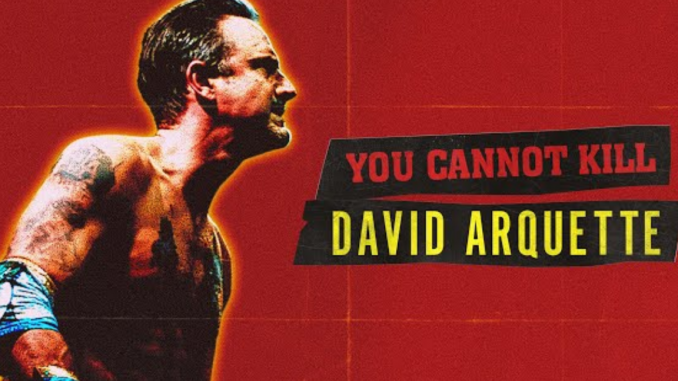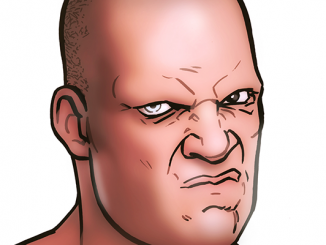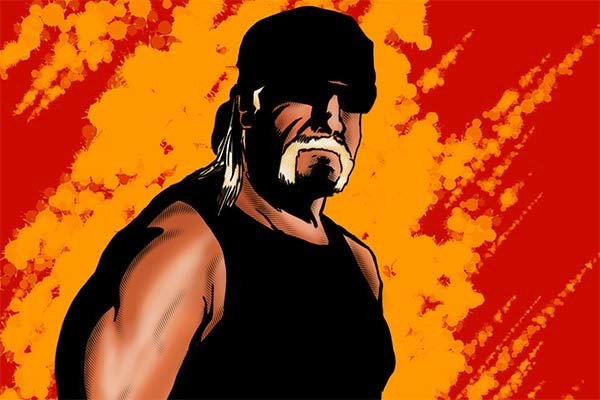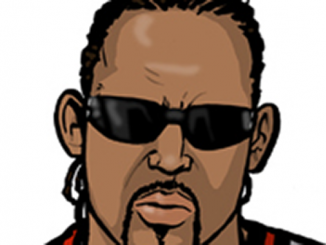
SPOTLIGHTED PODCAST ALERT (YOUR ARTICLE BEGINS A FEW INCHES DOWN)...
FULL DISCLOSURE: I worked on the film “Black Limousine” as a grip which starred David Arquette.
When I saw David Arquette was making his wrestling comeback in 2018, I was hoping someone was documenting this as it had the potential makings of a very solid documentary. The results of the documentary are a mixed bag with the positives outweighing the negatives. The name David Arquette in regards to wrestling is often looked at as something between a joke or one of the worst things to ever happen to the professional wrestling business.
The documentary off on a bit a rough start to me as we get a very stereotypical wrestling promo from Ken Anderson about not wanting people like David Arquette in “his business.” One of the things I kept guessing while watching was who exactly this documentary was targeted at. It’s kind of for wrestling fans but not diehards as there are some real headscratchers if it is. I feel like the audience is someone scrolling through a streaming service and noticing Arquette, knowing him from “Scream,” and being “Yeah, whatever happened to him?” Part of that feeling is the way they talk about wrestling early on comes across as a way to sell you on it not being this dumb thing people watch. At times the clear reverence and love that Arquette has for the sport is undercut by the juxtaposition of some of the footage they use.
How interviews are done with wrestling personalities is kind of bizarre throughout. An interview early on labels Ric Flair as “The Godfather of Wrestling,” something I’ve never heard used for Ric before. And to make it boubly weird, some bootleg Nino Rota sounding music, which was so odd as it isn’t like Ric Flair ever had a Mafioso gimmick. And in typical Flair fashion, he can’t go through the interview without commenting on Arquette’s wife. How interviews go with wrestling personalities varies, but by and large it is a weird line between being completely candid and then keeping with kayfabe. And even though he is featured later as a yoga sensei on a beach in Mexico, the documentary doesn’t interview DDP about the infamous match. The documentary uses a rather poor looking copy of a shoot by Kayfabe Commentaries. In addition to this, we get brief clips from one of Jim Cornette’s podcasts and two instances of the YouTube series “Wrestling With Wregret” which is such an interesting encapsulation of the online wrestling world of the late 2010s.
The documentary starts with David at a particularly low point in his life as he’s struggling career-wise and is less than a year after having a heart attack, problems with being an alcoholic, and battles with mental health issues. These segments are some of the most interesting and give a glimpse into the person that is David Arquette. One of the most interesting clips is his psychiatrist talking about how he believes David is using wrestling as a way to punish himself. This is never fully examined, but an interesting idea for sure.
There are interviews with David’s family including his siblings who are still alive, his oldest child, and both his first wife Courtney Cox and his current wife Christine McClarty. I was somewhat expecting the documentary to dive into how David dealt with the death of his sibling Alexis, but it is only briefly mentioned by Patricia.
A few times in the documentary he often says his taste in women was defined by his love of Miss Elizabeth in the ’80s. In his match with Mr. Anderson, his current wife comes out in an outfit very much inspired by the legendary valet of Randy Savage.
The start of his journey going back to wrestling is portrayed as him getting in a drunken argument with Brian Knobs and some wrestler onlooker about not being allowed to make an appearance at some legends show that Knobs was performing. What made me question some of this was when I noticed that one of the cameramen documenting this scuffle was Eric Bischoff. Considering Bischoff and Knobs’s past and association with Hulk Hogan, I questioned the authenticity of this interaction. Bischoff is briefly interviewed and blames himself for letting Arquette get into the situation, but attributes Vince Russo as the one to come up with the idea. I’ve always heard it was Tony Schiavone, but Vince Russo is the one credited with putting the world title on Arquette.
To further question this inauthenticity is Arquette then goes to a backyard show which has absolutely no fans and is the stereotype of an awful backyard show with a horrible ring and light tubes. This section could be viewed as an almost parody of those obsessed with the gatekeeping and respect of past generations of wrestlers. It seemed like Arquette wasn’t taking this early stuff seriously as he has a new joke gimmick, “The Magic Man.” And while doing this he gets hit with light tubes, some definite foreshadowing for later. Early on you can tell he isn’t in good shape and while he does start to get properly trained, they kind of underplay it to a degree. You can tell by the time he’s doing his match RJ City, he’s lost at least 50 pounds and has gotten into really good shape for a man his age less than a year from a heart attack. They do show when he installs a ring at his home in Los Angeles and Peter Avalon comes over to help him train.
There is a sidetrack to Mexico that seems designed just to pad time. It doesn’t necessarily seem staged, but more unnecessary than anything else. More than anything, it has the reality show setup of creating a scenario with which to have your main character involved, which happens a few times throughout this. As someone who has worked on documentaries in the past, this does detract from any sort of journalistic integrity for this documentary. Arquette meets up with DDP, who is doing yoga on a beach. The highlight of this sojourn to Mexico is the sincerity in Arquette when he is gifted a mask by one of the luchadors he had been training with after a match.
His match with R.J. City on Championship Wrestling from Hollywood is portrayed as his proper return to the ring in a match better than it had any right to be. I would have liked to have seen more about how this came together behind the scenes as opposed to just seeing promos from Twitter and the show. R.J. City stands out in the documentary as nothing being off-limits and not overly concerned with “protecting the business.” They show the two planning the match which is intercut with footage of the match. It’s one of the best parts of the whole movie. The documentary then does an overview of the series of matches Arquette has after this, be it tags with R.J. City or singles matches including one with Timothy Thatcher.
The infamous Nick Gage match from “Joey Janela’s L.A. Confidential” is covered in pretty big detail. I would have been interested in getting some-out-of character thoughts from Nick Gage as he is a fascinating character in independent wrestling. What was most interesting to me is the person who is wrapping Arquette’s neck in a towel and applying pressure was Luke Perry. Luke Perry, who was doing his best to not be on camera and “Jungle Boy” Jack Perry drive David Arquette to the emergency room. A few months later, Luke Perry died, which this had a pretty big impact on Arquette and it definitely alludes that he relapsed.
The film hits its crescendo by going to the Arquette vs. Ken Anderson match which the movie began with by featuring an aforementioned promo by Kennedy. This match is taking places at Knobs’s event that the year prior Arquette was ejected from but he now returns as having redeemed himself somewhat in the eyes of wrestling fans on the independent scene.
The movie has a brief coda about Arquette wrestling Jungle Boy at an event that meant a lot to both of them. During the credits is a variety of scenes, the neatest of which is Brian Pillman Jr. talking about how he considers Arquette family considering that Arquette gave his money from his WCW run to the families of Brian Pillman and Owen Hart.
All in all, this is a humanizing portrait of one of wrestling’s most maligned historical figures. It wasn’t Arquette’s fault that WCW wanted and pushed the title onto him. And this film and his journey in the independents the last few years is his way to try to repay and make amends for what harm he felt his title win did to both fans, the wrestling business, and wrestling history. It is an entertaining documentary that at times has some issues with journalistic integrity but that itself can be looked at as a statement on the nature of reality in the wrestling business.
3.5 out of 5 stars.




Leave a Reply
You must be logged in to post a comment.